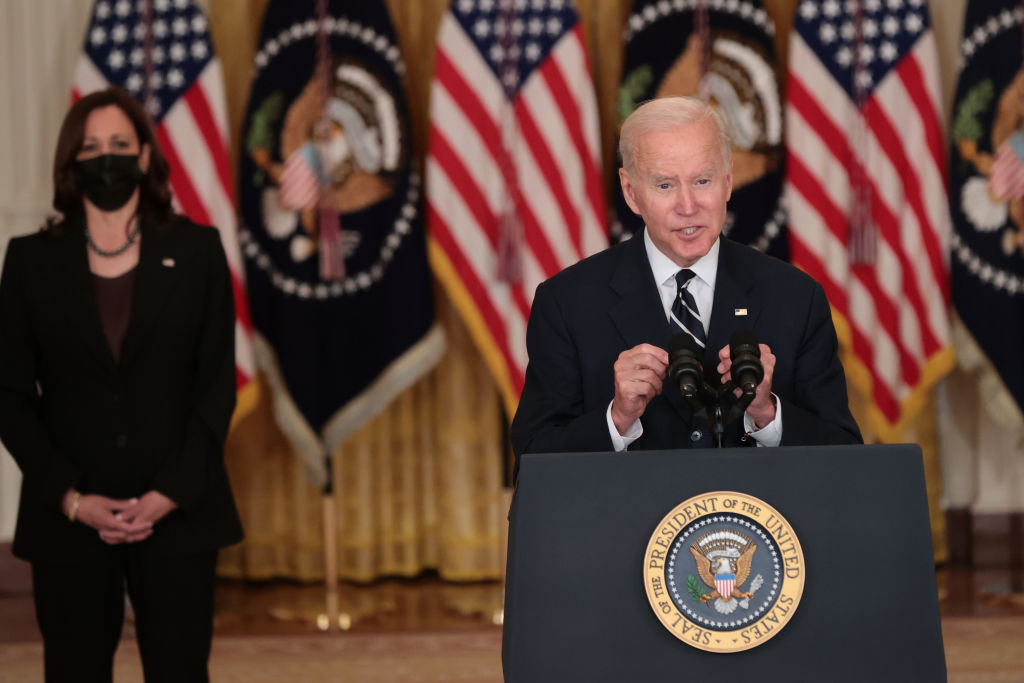American Families Plan Includes Free Community College, Bigger Pell Grants
Writer
Writer
www.bestcolleges.com is an advertising-supported site. Featured or trusted partner programs and all school search, finder, or match results are for schools that compensate us. This compensation does not influence our school rankings, resource guides, or other editorially-independent information published on this site.
Turn Your Dreams Into Reality
Take our quiz and we'll do the homework for you! Compare your school matches and apply to your top choice today.
- The American Families Plan would make two years of community college free.
- Biden's proposal also includes enlarged Pell Grants and student retention programs.
- Despite the push for free college, community college graduation rates remain low.
The American Rescue Plan — President Joe Biden's $1.9 trillion relief bill — includes $40 billion for higher education. When last year's CARES Act funneled $14 billion to higher education, colleges were required to spend at least 50% of their allotments on emergency student grants. Under the American Rescue Plan, colleges must again spend half of their funds on grants.
But even more student aid could be in store. Biden's proposed American Families Plan includes over $200 billion for education and supports universal preschool, subsidized childcare, and paid family leave. The plan would also fund wraparound healthcare services at colleges, aiming to transform campuses into community hubs.
For college students, the American Families Plan would mean bigger Pell Grants and more retention and completion services. For those considering college, it would mean the opportunity to attend community college for free.
The White House describes the suite of stimulus packages that includes the American Families Plan as "once-in-a-generation investments in our nation's future."
What the American Families Plan Offers College Students
According to The New York Times, the American Families Plan "comes with an explicit message that the private sector alone cannot deliver on [the American] dream and that the government has a central part to play."
The plan, unveiled in late April, includes the following:
-
$109 billion to provide two years of free community college -
$85 billion for the Pell Grant program, increasing the maximum grant by $1,400 -
$62 billion in grants for programs that improve retention and completion rates at colleges that serve low-income students, especially community colleges -
$39 billion for two years of free college for students who come from families earning less than $125,000 and who are enrolled at a four-year HBCU, tribal college or university, or minority-serving institution
The ambitious proposal, which seeks to raise the tax rate and capital gains rate of high-income Americans, is likely to face opposition from congressional Republicans.
Popular Online Programs
Learn about start dates, transferring credits, availability of financial aid, and more by contacting the universities below.
Free Community College for All
The notion of free college gained popularity in the U.S. during Senator Bernie Sanders' 2016 presidential campaign. Like Sanders' proposal to erase student debt, free college is now a staple of many progressive platforms.
Biden calls for $109 billion in federal funding to provide two years of free community college.

Biden gradually embraced toned-down versions of both plans, saying he would welcome signing a bill to cancel as much as $10,000 of every student borrower's debt, while promoting a plan for free community college. The American Families Plan brings free college even closer to reality.
Biden calls for $109 billion in federal funding to provide two years of free community college to all first-time students, including students in the Deferred Action for Child Arrivals (DACA) program.
With full participation from all U.S. states, territories, and tribes, about 5.5 million students would be eligible to acquire a college credential for free, and would be able to use the benefit for up to four years.
Increased Funding for Low-Income Students Through Pell Grants
The American Families Plan includes major investments in low-income students and the colleges that serve them.
As the main source of financial aid available to low-income students, Pell Grants once covered nearly 80% of college costs, according to the White House. Through inflation, the maximum award amount now covers less than 30% of the costs of attending a four-year college.
The Biden administration would dedicate $85 billion to increase the maximum grant by $1,400 as a first step toward Biden's stated goal of doubling the maximum value of Pell Grants. For the 2021-22 school year, the maximum award amount is $6,495. The plan would also allow DACA students to access Pell Grants.
Money for College Retention and Completion Efforts
To address graduation gaps, the plan includes $62 billion in funding to improve retention and completion rates at colleges that primarily serve low-income students. A Brookings Institution study found that the average six-year graduation rate for Pell Grant recipients was almost 8 percentage points lower than that of non-Pell Grant recipients.
Two- and four-year colleges could use the funds to provide services and emergency money to help students who are struggling to stay enrolled. The funds could also be used to recruit and retain a diverse faculty, which is associated with higher graduation rates for Black and brown students.
Two Years of Free College at HBCUs, TCUs, and MSIs
While free four-year college remains off the negotiating table at this time, some students at historically Black colleges and universities (HBCUs), tribal colleges and universities (TCUs), and minority-serving institutions (MSIs) would receive two years of subsidized tuition through the American Families Plan.
A "historic investment" of $39 billion would cover two years of college for students who are enrolled in a four-year HBCU, TCU, or MSI, and whose families earn less than $125,000 a year.
The plan would also increase existing institutional aid grants to HBCUs, TCUs, and MSIs by $5 billion and direct $2 billion toward "building a pipeline of skilled healthcare workers with graduate degrees."
Low Retention Rates Undermine the Free-College Push
A handful of states already maintain free community college programs, including New York, Oregon, Rhode Island, and Tennessee.
The Tennessee Promise program, which recently opened up to all adults who don't already have a credential, has proven massively popular. Rather than the 8,000 applicants the program anticipated last year, it received over 33,000, and nearly half enrolled in the first semester.
In the Tennessee Promise program, only 22% of the high school graduates who enrolled in 2015 graduated within two years.
A big first-year class, however, doesn't necessarily translate into a big graduating class. Community colleges in particular struggle with low graduation rates. In the Tennessee Promise program, for example, only 22% of the high school graduates who enrolled in 2015 graduated within two years; nearly half dropped out.
According to the National Center for Education Statistics, just 33% of students at all two-year colleges graduate within three years. During the COVID-19 pandemic, community colleges have faced a steep decline in enrollment, which threatens to drag down graduation rates even further, with repercussions for the American workforce.
Beyond increasing funding for low-income students, Biden's broader agenda for community colleges includes expanding pathways between colleges and employers, allowing schools to adapt their programming to in-demand skills, and retraining graduates for new positions.





